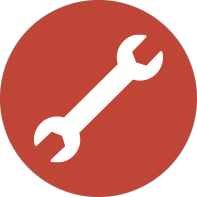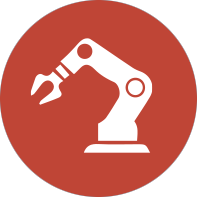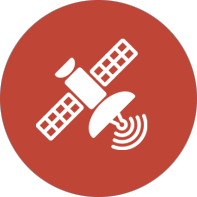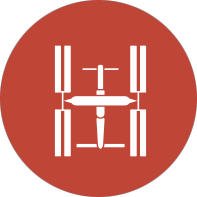15-18yrs Project 1: 3D Printing Lunar Bricks
Industry Partner: SpaceCopy
Problem Statement:
How can we create strong, sustainable construction bricks on the lunar surface using available materials and 3D printing techniques?
Objective:
To simulate lunar regolith and experiment with 3D printing bricks, evaluating their strength, structure, and feasibility for lunar infrastructure.
Research Topics:
- Properties of lunar regolith
- Binder jetting and sintering in additive manufacturing
- Thermal and mechanical stress in lunar environments
Methodology:
- Simulate regolith using sand and plaster
- Design brick structures using CAD
- 3D print sample models
- Test and analyze mechanical strength
Phase-wise Plan (20 hrs):
- Day 1-2: Introduction, research on lunar regolith and 3D printing techniques (4 hrs)
- Day 3-4: CAD modeling of bricks (4 hrs)
- Day 5-6: Simulated regolith preparation + 3D printing (4 hrs)
- Day 7-8: Strength testing, iterative redesign (4 hrs)
- Day 9: Report documentation (2 hrs)
- Day 10: Final presentation and evaluation (2 hrs)
Expected Outcome:
- Functional prototype of lunar brick
- Poster explaining material selection and process
IEEE Report Format:
- Abstract
- Introduction
- Literature Review
- Methodology
- Results
- Discussion
- Conclusion
- References
15-18yrs Project 2: Design a Lunar Construction Bot
Industry Partner: SpaceCopy
Problem Statement:
What kind of robot can autonomously assist 3D printing processes for lunar surface construction under extreme conditions?
Objective:
To build and test a robotic system that can mimic lunar additive manufacturing support operations.
Research Topics:
- Robotics and automation in construction
- Lunar terrain navigation
- Robotic arms and degrees of freedom
Methodology:
- Study robotic systems used in extraterrestrial environments
- Assemble a basic robotic arm
- Code path movement to simulate layering
Phase-wise Plan:
- Research & Concept Design (4 hrs)
- Robotic Kit Familiarization & Assembly (4 hrs)
- Movement Programming (4 hrs)
- Simulation & Task Testing (4 hrs)
- Documentation + Presentation (4 hrs)
Expected Outcome:
- Robotic simulation of construction tasks
- IEEE poster & video demo
IEEE Report Format: (Same as above)
15-18yrs Project 3: Build Your Own CubeSat Mission
Industry Partner: Transcend Satellite Technologies
Problem Statement:
How can a CubeSat be used for Earth observation or educational satellite missions?
Objective:
To conceptualize, design and simulate a CubeSat system with specific mission goals.
Research Topics:
- CubeSat architecture
- Orbital mechanics
- Satellite payload systems
Methodology:
- Create a mission objective (e.g., disaster monitoring)
- Design CubeSat layout in TinkerCAD/Fusion360
- Simulate orbit with STK or web tools
Phase-wise Plan:
- Introduction & Mission Planning (4 hrs)
- Payload & Systems Design (4 hrs)
- CAD Modeling (4 hrs)
- Orbit Simulation (4 hrs)
- Documentation & Presentation (4 hrs)
Expected Outcome:
- Mission dossier
- CAD render of CubeSat
- Launch readiness checklist
IEEE Report Format: (Same as above)
15-18yrs Project 4: Satellite Data Decoder
Industry Partner: Transcend Satellite Technologies
Problem Statement:
How do we interpret telemetry and data sent from small satellites to ground stations?
Objective:
To decode and visualize real satellite data using simple SDR setups.
Research Topics:
- Basics of radio frequencies
- Telemetry protocols
- SDR (Software Defined Radio)
Methodology:
- Install virtual SDR tool
- Capture sample signals
- Map signal to data (altitude, battery, GPS)
Phase-wise Plan:
- Research on Communication Systems (4 hrs)
- SDR Simulation Training (4 hrs)
- Data Capture & Decoding (6 hrs)
- Visualization & Analysis (4 hrs)
- Reporting (2 hrs)
Expected Outcome:
- Decoded signal charts
- IEEE report on communication pipeline
IEEE Report Format: (Same as above)
15-18yrs Project 5: Dock & Deploy: Space Station Simulator
Industry Partner: Arkisys – Orbital Platforms
Problem Statement:
What modular docking designs could be used for satellite deployment in orbit?
Objective:
To create an interlocking system for simulating modular satellites or payloads.
Research Topics:
- Modular spacecraft design
- Docking interfaces
- Microgravity dynamics
Methodology:
- Design docking nodes with LEGO or magnetic components
- Simulate detachment in orbit
- Build docking prototypes
Phase-wise Plan:
- Docking Systems Research (4 hrs)
- CAD/Physical Prototyping (4 hrs)
- Build + Assemble Components (4 hrs)
- Deployment Simulation (4 hrs)
- Report + Presentation (4 hrs)
Expected Outcome:
- Modular model demonstration
- Docking interface documentation
IEEE Report Format: (Same as above)
15-18yrs Project 6: Build a Low-Cost Ground Station
Industry Partner: Transcend Satellite Technologies
Problem Statement:
Can a functional ground station be built affordably to receive satellite signals?
Objective:
To create a simple ground station using SDR and DIY antenna setup.
Research Topics:
- Ground station architecture
- Signal strength and noise
- Yagi antenna design
Methodology:
- Build paper model or 3D printed antenna
- Simulate tracking using software
- Map received signal outputs
Phase-wise Plan:
- Antenna Design Research (4 hrs)
- Hardware Build (4 hrs)
- Signal Simulation & Software Training (4 hrs)
- Demo + Report Writing (4 hrs)
- Final Evaluation (4 hrs)
Expected Outcome:
- DIY Ground Station model
- Signal analysis charts
IEEE Report Format: (Same as above)
15-18yrs Project 7: Tethered Spacecraft System for Active Space Debris Removal
Guided by: Mr. Vitali Braun, Space Debris Engineer, European Space Agency (ESA)
Context: The growing presence of decommissioned satellites and spent rocket bodies in Earth's orbit poses a significant risk to sustainable space operations. To address this critical issue, this student-led project, in collaboration with ESA, focuses on developing an innovative tethered spacecraft system for active debris removal. The project will culminate in a functional prototype designed to capture and stabilize large, uncooperative, and potentially tumbling space debris.
Project Objective
To design, prototype, and test a tethered spacecraft system capable of:
- Capturing and stabilizing large, uncooperative space debris.
- Reducing the angular velocity of tumbling debris using viscoelastic tether dynamics.
- Guiding debris to a disposal orbit through active thrust control.
The project will also investigate the viscoelastic properties of various tether materials to optimize attitude damping.
System Concept
The proposed system features a chaser spacecraft connected to a piece of rotating debris via a main tether with four sub-tethers attached to different points on the debris. By integrating:
- Active thrust control on the chaser spacecraft, and
- Viscoelastic dynamics of the tether system,
the system aims to dampen the debris’ rotation and facilitate its safe transfer to a disposal orbit.
UG Project 1: Orbital Payload Deployment System
Industry Partner: Arkisys
Problem Statement:
How can orbital platforms safely deploy payloads in LEO with precision and timing?
Objective:
To build a mechanical deployment system simulating satellite ejection.
Research Topics:
- Orbital dynamics
- Deployment spring mechanisms
- Safety protocols in space
Methodology:
- Study orbital deployment mechanisms
- Design and prototype a spring-loaded model
- Simulate using Arduino or physical switch
Phase-wise Plan:
- Mechanism Research (4 hrs)
- CAD Design + Calculation (4 hrs)
- Build Mechanism (6 hrs)
- Testing & Optimization (4 hrs)
- IEEE Reporting (2 hrs)
Outcome:
- Functional deployment setup
- Launch simulation report
UG Project 2: Lunar-Optimized Additive Manufacturing Arm
Industry Partner: SpaceCopy
Problem Statement:
Can a robotic arm be designed to perform 3D printing under reduced gravity conditions?
Objective:
To develop a torque-controlled robotic arm system with lunar operational constraints.
Research Topics:
- Torque optimization
- Robotic arm mechanics
- Material behavior in low gravity
Methodology:
- Design 4-DOF robotic arm
- Use spring systems to simulate lunar gravity
- Test accuracy & path control
Phase-wise Plan:
- Background Research & Arm Kinematics (4 hrs)
- CAD & Servo Calibration (4 hrs)
- Mechanical Assembly (4 hrs)
- Testing + Simulated Gravity Conditions (6 hrs)
- Report + Presentation (2 hrs)
Expected Outcome:
- Demo robotic arm
- Simulation paper on reduced gravity performance
Templates Provided
- IEEE Research Paper Template
- Progress Tracker Sheets
- Rubric-Based Evaluation Forms
- Design Logbook Templates
NOTE: All students must submit:
- Project Prototype/Model
- Final IEEE Report (max 6 pages)
- Presentation Deck (5–7 slides)
Certification Criteria:
- Minimum 85% attendance
- Submission of documentation
- Team collaboration and peer feedback





